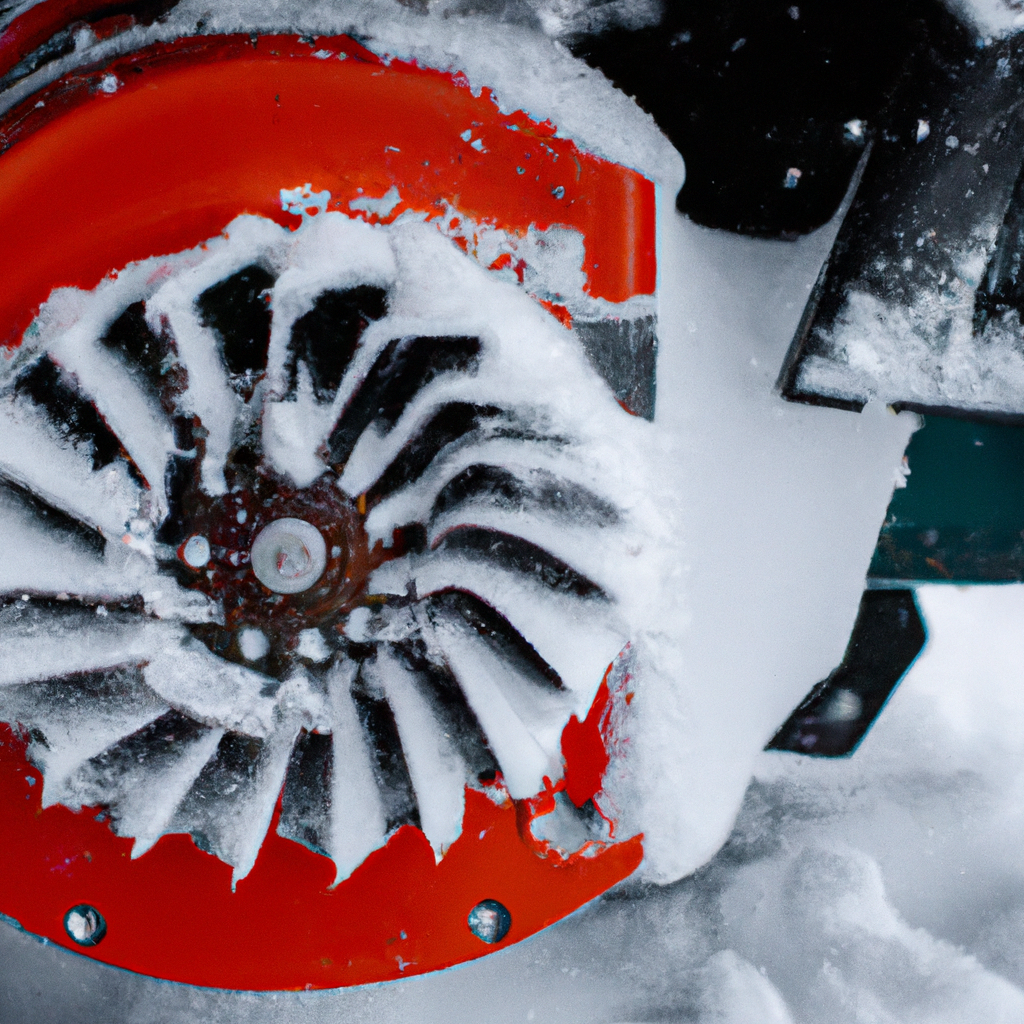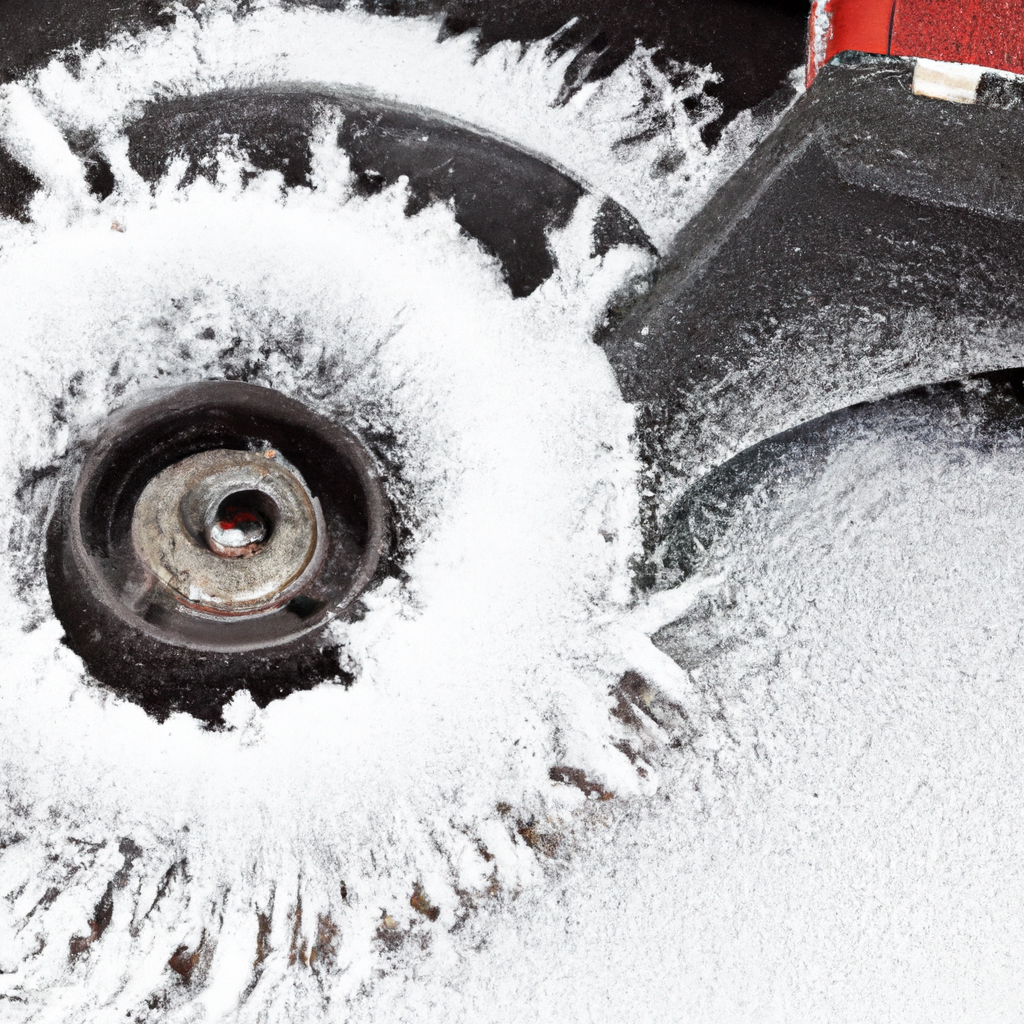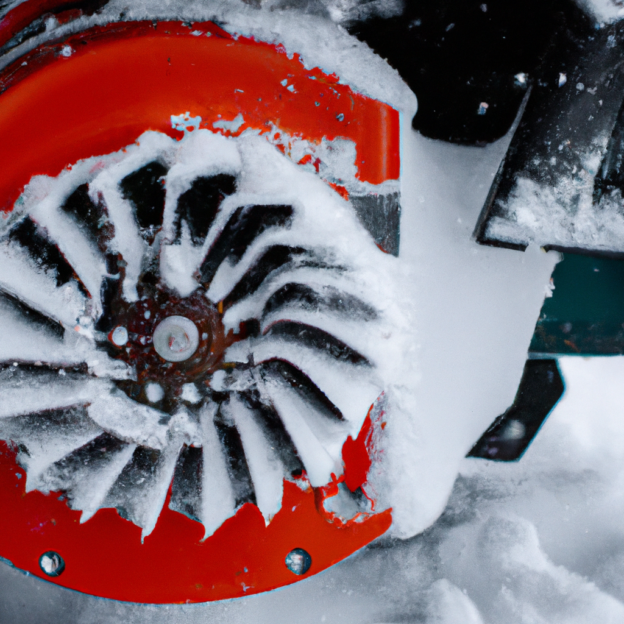So you’ve invested in a snowblower to make your winter days a little less snowy and more enjoyable. But now you’re worried about the dreaded rust that can come with the constant exposure to snow, ice, and moisture. Don’t fret! In this article, we’ll share some practical tips and tricks to help you keep your snowblower in top shape and prevent rust from becoming a problem. From regular cleaning and proper storage techniques to using rust inhibitors, we’ve got you covered. Say goodbye to rusty snowblowers and hello to efficient snow clearing all winter long!

Choosing a Rust-Resistant Snowblower
When selecting a snowblower, one of the key factors to consider is its resistance to rust. Snowblowers are exposed to harsh winter elements, including snow, moisture, and salt, which can lead to rust and corrosion over time. To ensure that your snowblower remains rust-free for years to come, there are a few factors to keep in mind.
Consider the Material
The material used in the construction of the snowblower plays a crucial role in its resistance to rust. Look for snowblowers that are made from materials such as stainless steel or aluminum, as these materials are less prone to corrosion. Avoid snowblowers made from untreated or cheap steel, as they are more likely to develop rust over time.
Look for Protective Coatings
Another crucial aspect to consider is whether the snowblower has any protective coatings. These coatings, such as powder coating or enamel paint, create a barrier between the metal and the elements, preventing moisture and salt from coming into direct contact with the surface. This extra layer of protection can significantly reduce the risk of rust formation.
Check for Galvanized Parts
Galvanization is a process in which a protective layer of zinc is applied to metal surfaces. Snowblowers that have galvanized parts, especially those that come into direct contact with snow and ice, are more resistant to rust. The zinc coating acts as a sacrificial layer, corroding instead of the underlying metal. This is a desirable quality to look for when choosing a rust-resistant snowblower.
Proper Storage and Maintenance
In addition to selecting a snowblower with rust-resistant features, proper storage and regular maintenance are essential for preventing rust formation and maintaining the longevity of your machine.
Clean the Snowblower
After each use, take the time to thoroughly clean your snowblower. Remove any snow, ice, or debris from all surfaces, including the blades, chute, and engine. Pay extra attention to hard-to-reach areas where melted snow or moisture may accumulate.
Dry Thoroughly
Moisture is the enemy of rust prevention, so it’s crucial to ensure that your snowblower is completely dry before storing it. Use a towel or air compressor to remove any remaining moisture. Pay close attention to areas that are prone to water retention, such as the chute and around the engine.
Apply a Rust Inhibitor
Applying a rust inhibitor or a corrosion-resistant spray to your snowblower can provide an extra layer of protection against rust formation. These products usually leave a thin film that helps to repel moisture and inhibits the oxidation of the metal surfaces. Follow the manufacturer’s instructions for application and reapplication as needed.
Use a Protective Cover
Investing in a proper cover for your snowblower can go a long way in preserving its condition and preventing rust. A cover will shield your machine from moisture, dust, and other elements when it’s not in use. Make sure to choose a cover that is specifically designed for snowblower storage and fits securely.
Store in a Dry Area
When not in use, store your snowblower in a dry area, such as a garage or shed. Avoid leaving it exposed to the elements, as this increases the likelihood of moisture accumulation and rust formation. If storing the snowblower outside is your only option, consider using a waterproof tarp in addition to the protective cover for added protection.

Regular Cleaning and Inspection
While proper storage and maintenance are crucial, it’s also important to regularly clean and inspect your snowblower during the winter season to catch any early signs of rust formation.
Remove Snow and Debris
After each use, make it a habit to remove any snow, ice, or debris that may have accumulated on your snowblower. Use a brush or a broom to sweep away any loose snow. Pay attention to hard-to-reach areas and ensure that they are free from any trapped moisture.
Inspect for Any Signs of Rust
During your cleaning routine, take the time to inspect your snowblower for any signs of rust. Look for reddish-orange patches or flaking paint, as these are indications of rust formation. If you notice any rust spots, it’s important to address them promptly to prevent further damage.
Repair or Replace Damaged Parts
If you find any rust spots or damaged parts during your inspection, it’s crucial to take immediate action. Small areas of rust can often be treated with a rust remover or a wire brush, followed by a protective coating. However, if the rust has caused significant damage or weakened the structure of the snowblower, it may be necessary to replace the affected parts.
Protective Measures during Use
While it’s important to take precautions before and after using your snowblower, there are also measures you can take during operation to minimize the exposure of your machine to moisture and prevent rust formation.
Avoid Exposure to Moisture
Whenever possible, try to avoid operating your snowblower in excessively wet or slushy conditions. Snowblowers are designed to handle snow, but prolonged exposure to moisture increases the risk of rust formation. If the snow is wet, consider holding off on snow removal until dryer conditions are present.
Clear Snow in Dry Conditions
Similarly, try to clear the snow when the weather is dry. Snow that falls on a dry surface is less likely to retain moisture, reducing the chances of rust formation. If you anticipate wet conditions, make sure to follow up with proper cleaning and drying procedures after use.
Use Rust-Resistant Lubricants
Lubricating moving parts is important for the smooth operation of your snowblower. However, not all lubricants are created equal when it comes to rust prevention. Opt for rust-resistant lubricants specifically designed for outdoor equipment. These lubricants have additional properties that help repel moisture and inhibit rust formation.
Winterizing for Long-Term Protection
At the end of the winter season, taking a few extra steps to winterize your snowblower can provide long-term protection against rust and ensure that it’s ready for reliable operation when needed again.
Run the Snowblower to Warm It Up
Before winterizing your snowblower, start the engine and let it run for a few minutes to warm up. This helps to burn off any remaining fuel and prevent the formation of varnish or deposits in the engine.
Add Stabilizer to the Fuel
To prevent fuel degradation and potential carburetor issues, add a fuel stabilizer to the gas tank according to the manufacturer’s instructions. Stabilizers help to slow down the oxidation process and keep the fuel fresh during the offseason.
Empty the Fuel Tank
If you anticipate a long period of storage, it’s generally recommended to completely empty the fuel tank. Fuel that is left sitting for an extended period can become stale, gumming up the carburetor and potentially causing starting issues.
Change the Oil
Before storing your snowblower, consider changing the oil. Over time, oil can become contaminated with moisture and debris, increasing the risk of rust formation. Fresh oil will provide better protection for the engine during the storage period.
Clean or Replace the Spark Plug
To ensure reliable starting in the next winter season, remove the spark plug and inspect it. If the spark plug is dirty or worn, clean it or replace it with a new one. A clean spark plug is essential for proper ignition and efficient engine operation.
Professional Maintenance and Repair
While regular cleaning and maintenance can go a long way in preventing rust, it’s also essential to schedule professional servicing for your snowblower.
Schedule Annual Servicing
At least once a year, consider taking your snowblower to a professional for a thorough inspection and servicing. A professional technician can identify any potential rust issues, perform necessary repairs or replacements, and ensure that your snowblower is in optimal condition for the upcoming winter season.
Address Rust Issues Promptly
If you notice any significant rust issues during your own inspections or while using the snowblower, it’s best to consult a professional. Rust can weaken the structural integrity of your machine, leading to safety hazards and costly repairs if left untreated. A professional can assess the extent of the rust and recommend the appropriate repairs or replacements.
Conclusion
Preventing rust on your snowblower requires a combination of careful selection, proper storage, regular maintenance, and protective measures during use. By choosing a rust-resistant snowblower and following the outlined maintenance steps, you can prolong the lifespan of your machine and ensure reliable performance season after season. Remember to always inspect your snowblower for signs of rust and address any issues promptly to prevent further damage. With the right care and attention, your snowblower can remain rust-free and ready to tackle the next winter’s snowfall.
